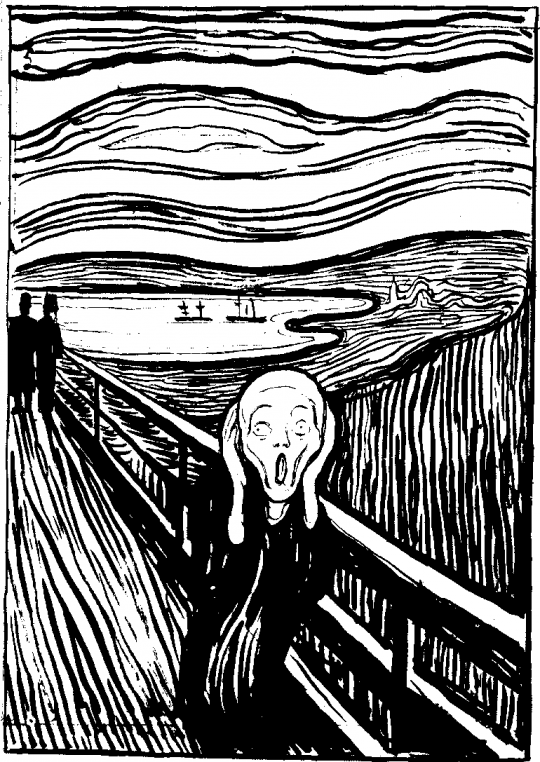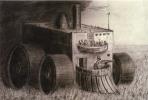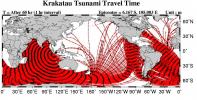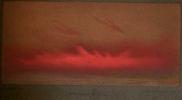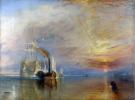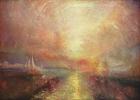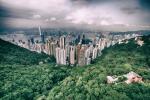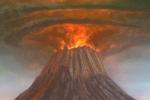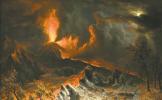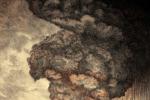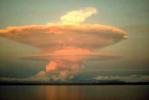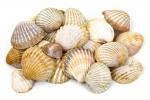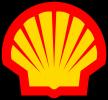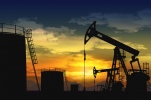Blog posts
Posts
A Hackers Manifesto, verze 4.0, kapitola 4.
By samotar, 10 January 2023
Alfred ve dvoře čili Poznámka k pražské hetero-utopii
By samotar, 10 November 2022
Trnovou korunou a tankem do srdíčka
By samotar, 2 July 2022
Hakim Bey - Informační válka
By samotar, 26 March 2022
Jean-Pierre Dupuy: Do we shape technologies, or do they shape us?
By samotar, 6 March 2022
Václav Cílek: Záhada zpívající houby
By samotar, 15 February 2022
Guy Debord - Teorie dérive
By samotar, 21 January 2022
Jack Burnham – Systémová estetika
By samotar, 19 November 2021
Poznámka pod čarou k výstavě Handa Gote: Věc, nástroj, čas, fetiš, hygiena, tabu
By samotar, 13 July 2021
Rána po ránech
By samotar, 23 May 2021
Na dohled od bronzového jezdce
By samotar, 4 March 2021
Z archivu:Mlha - ticho - temnota a bílé díry
By samotar, 7 October 2020
Zarchivu: Hůlna-kejdže
By samotar, 7 September 2020
Center for Land Use Interpretation
By samotar, 18 June 2020
Dawn Chorus Day - zvuky za svítání
By samotar, 30 April 2020
Z archivu: Bílé Břehy 2012 a Liběchov 2011
By , 3 April 2020
Z archivu: Krzysztof Wodiczko v DOXU
By samotar, 26 March 2020
GARY SNYDER: WRITERS AND THE WAR AGAINST NATURE
By samotar, 20 March 2020
Podoby domova: hnízda, nory, doupata, pavučiny, domestikace a ekologie
By samotar, 17 March 2020
Michel Serres: Transdisciplinarity as Relative Exteriority
By samotar, 5 November 2019
Pavel Ctibor: Sahat zakázáno
By samotar, 22 September 2019
Emmanuel Lévinas: HEIDEGGER, GAGARIN A MY
By samotar, 19 September 2019
Atmosférické poruchy / Atmospheric Disturbances - Ustí nad Labem
By samotar, 13 September 2019
Erkka Laininen: A Radical Vision of the Future School
By samotar, 10 August 2019
Anton Pannekoek: The Destruction of Nature (1909)
By samotar, 21 July 2019
Co padá shůry - světlo, pelyněk, oheň a šrot
By samotar, 30 December 2018
2000 slov v čase klimatických změn - manifest
By samotar, 2 November 2018
Vladimír Úlehla, sucho, geoinženýrství, endokrinologie, ekologie a Josef Charvát
By samotář, 22 September 2018
Lukáš Likavčan: Thermodynamics of Necrocracy - SUVs, entropy, and contingency management
By samotar, 20 July 2018
Tajemství spolupráce: Miloš Šejn
By samotar, 27 June 2018
Invisible Images (Your Pictures Are Looking at You) Trevor Paglen
By samotar, 2 June 2018
KŘEST KNIHY KRAJINA V POZORU: THE LANDSCAPE IN FOCUS.
By samotar, 18 May 2018
Případ zchudlé planety:Vojtěch Kotecký
By samotar, 22 April 2018
Rozhovor na Vltavě: Jak umění reaguje na dobu antropocénu?
By samotar, 10 March 2018
Skolt Sámi Path to Climate Change Resilience
By samotar, 10 December 2017
Brian Holmes: Driving the Golden Spike - The Aesthetics of Anthropocene Public Space
By samotar, 22 November 2017
Ohlédnutí/Revisited Soundworm Gathering
By samotař, 9 October 2017
Kleté krajiny
By samotar, 7 October 2017
Kinterova Jednotka a postnatura
By samotař, 15 September 2017
Ruiny-Černý trojúhelník a Koudelkův pohyb v saturnských kruzích
By samotar, 13 July 2017
Upsych316a Universal Psychiatric Church
By Samotar, 6 July 2017
Miloš Vojtěchovský: Krátká rozprava o místě z roku 1994
By milos, 31 May 2017
Za teorií poznání (radostný nekrolog), Bohuslav Blažek
By miloš vojtěchovský, 9 April 2017
On the Transmutation of Species
By miloš vojtěchovský, 27 March 2017
Gustav Metzger: Poznámky ke krizi v technologickém umění
By samotař, 2 March 2017
CYBERPOSITIVE, Sadie Plant a Nick Land
By samotař, 2 March 2017
Ivan Illich: Ticho jako obecní statek
By samotař, 18 February 2017
Dialog o primitivismu – Lawrence Jarach a John Zerzan
By samotar, 29 December 2016
Thomas Berry:Ekozoická éra
By samotař, 8 December 2016
Jason W. Moore: Name the System! Anthropocenes & the Capitalocene Alternative
By miloš vojtěchovský, 24 November 2016
Michel Serres: Revisiting The Natural Contract
By samotař, 11 November 2016
Best a Basta době uhelné
By samotař, 31 October 2016
Epifanie, krajina a poslední člověk/Epiphany, Landscape and Last Man
By Samotar, 20 October 2016
Doba kamenná - (Ein, Eisen, Wittgen, Frankenstein), doba plastová a temná mineralogie
By samotař, 4 October 2016
Hledání hlasu řeky Bíliny
By samotař, 23 September 2016
Harrisons: A MANIFESTO FOR THE 21ST CENTURY
By , 19 September 2016
T.J. Demos: Anthropocene, Capitalocene, Gynocene: The Many Names of Resistance
By , 11 September 2016
Bratrstvo
By samotař, 1 September 2016
Neptunismus a plutonismus na vyhaslé sopce Bořeň
By , 14 August 2016
Murray Bookchin: Toward an Ecological Society/ K ekologické společnosti (1974)
By samotař, 31 July 2016
Metafory, endofyzika, manželé Themersonovi a Gordon Pask
By samotař, 15 July 2016
Anima Mundi Revisited
By miloš vojtěchovský, 28 June 2016
Simon A. Levin: The Evolution of Ecology
By samotař, 21 June 2016
Anna Remešová: Je možné představit si změnu?
By samotar, 20 June 2016
Jan Hloušek: Uranové město
By samotař, 31 May 2016
Josef Šmajs: Složí lidstvo zkoušku své racionální dospělosti?
By samotař, 20 May 2016
Manifest The Dark Mountain Project
By Samotar, 3 May 2016
Pokus o popis jednoho zápasu
By samotar, 29 April 2016
Václav Cílek: Antropocén – velké zrychlení světa
By Slawomír Uher, 23 April 2016
Nothing worse or better can happen
By Ewa Jacobsson, 5 April 2016
Real Reason we Can’t Stop Global Warming: Saskia Sassen
By , 18 March 2016
The Political Economy of the Cultural Commons and the Nature of Sustainable Wealth
By samotar, 12 March 2016
Jared Diamond - Easter's End
By , 21 February 2016
Felix Guattari - Three Ecologies (part 1)
By , 19 February 2016
W. H. Auden: Journey to Iceland
By , 9 February 2016
Jussi Parikka: The Earth
By Slawomír Uher, 8 February 2016
Brian Holmes: Extradisciplinary Investigations. Towards a New Critique of Institutions
By Stanislaw, 7 February 2016
Co číhá za humny? neboli revoluce přítomnosti
By Miloš Vojtěchovský, 31 January 2016
Podivuhodný osud polárníka a malíře Julia Payera
By , 23 January 2016
Red Sky: The Eschatology of Trans
By Miloš Vojtěchovský, 19 January 2016
#AKCELERACIONISTICKÝ MANIFEST (14. května 2013)
By samotar, 7 January 2016
The Forgotten Space: Notes for a Film
By , 7 January 2016
Rise and Fall of the Herring Towns:Impacts of Climate and Human Teleconnections
By , 25 December 2015
Hlubinná, temná, světlá i povrchová ekologie světa
By , 22 December 2015
Three short movies: Baroque Duchcov, New Lakes of Mostecko and Lignite Clouds
By Michal Kindernay, 21 December 2015
Lenka Dolanová: Umění mediální ekologie
By , 21 December 2015
Towards an Anti-atlas of Borders
By , 20 December 2015
Pavel Mrkus - KINESIS, instalace Nejsvětější Salvátor
By Miloš Vojtěchovský, 6 December 2015
Tváře/Faces bez hranic/Sans Frontiers
By Miloš Vojtěchovský, 29 November 2015
Josef Šmajs: Ústava Země/A Constitution for the Earth
By Samotar, 28 November 2015
John Jordan: The Work of Art (and Activism) in the Age of the Anthropocene
By Samotar, 23 November 2015
Humoreska: kočky, koulení, hroby a špatná muška prince Josefa Saského
By Samotar, 13 November 2015
Rozhovor:Před věčným nic se katalogy nesčítají
By Samotar, 11 November 2015
Lecture by Dustin Breiting and Vít Bohal on Anthropocene
By Samotar, 8 November 2015
Antropocén a mocné žblunknutí/Anthropocene and the Mighty Plop
By Samotar, 2 November 2015
Rory Rowan:Extinction as Usual?Geo-Social Futures and Left Optimism
By Samotar, 27 October 2015
Pavel Klusák: Budoucnost smutné krajiny/The Future of a Sad Region
By ll, 19 October 2015
Na Zemi vzhůru nohama
By Alena Kotzmannová, 17 October 2015
Upside-down on Earth
By Alena Kotzmannová, 17 October 2015
Thomas Hylland Eriksen: What’s wrong with the Global North and the Global South?
By Samotar, 17 October 2015
Nýey and Borealis: Sonic Topologies by Nicolas Perret & Silvia Ploner
By Samotar, 12 October 2015
Images from Finnmark (Living Through the Landscape)
By Nicholas Norton, 12 October 2015
Bruno Latour: Love Your Monsters, Why We Must Care for Our Technologies As We Do Our Children
By John Dee, 11 October 2015
Temné objekty k obdivu: Edward Burtynsky, Mitch Epstein, Alex Maclean, Liam Young
By Samotar 10 October 2015, 10 October 2015
Czech Radio on Frontiers of Solitude
By Samotar, 10 October 2015
Beyond Time: orka, orka, orka, nečas, nečas, nečas
By Samotar, 10 October 2015
Langewiese and Newt or walking to Dlouhá louka
By Michal Kindernay, 7 October 2015
Notice in the Norwegian newspaper „Altaposten“
By Nicholas Norton, 5 October 2015
Interview with Ivar Smedstad
By Nicholas Norton, 5 October 2015
Iceland Expedition, Part 2
By Julia Martin, 4 October 2015
Closing at the Osek Monastery
By Michal Kindernay, 3 October 2015
Iceland Expedition, Part 1
By Julia Martin, 3 October 2015
Finnmarka a kopce / The Hills of Finnmark
By Vladimír Merta, 2 October 2015
Od kláštera Osek na Selesiovu výšinu, k Lomu, Libkovicům, Hrdlovce a zpět/From The Osek Cloister to Lom and back
By Samotar, 27 September 2015
Sápmelažžat Picnic and the Exploration of the Sami Lands and Culture
By Vladimir, 27 September 2015
Gardens of the Osek Monastery/Zahrady oseckého kláštera
By ll, 27 September 2015
Workshop with Radek Mikuláš/Dílna s Radkem Mikulášem
By Samotářka Dagmar, 26 September 2015
Czech Radio Interview Jan Klápště, Ivan Plicka and mayor of Horní Jiřetín Vladimír Buřt
By ll, 25 September 2015
Bořeň, zvuk a HNP/Bořeň, sound and Gross National Product
By Samotar, 25 September 2015
Já, Doly, Dolly a zemský ráj
By Samotar, 23 September 2015
Up to the Ore Mountains
By Michal, Dagmar a Helena Samotáři , 22 September 2015
Václav Cílek and the Sacred Landscape
By Samotář Michal, 22 September 2015
Picnic at the Ledvice waste pond
By Samotar, 19 September 2015
Above Jezeří Castle
By Samotar, 19 September 2015
Cancerous Land, part 3
By Tamás Sajó, 18 September 2015
Ledvice coal preparation plant
By Dominik Žižka, 18 September 2015
pod hladinou
By Dominik Žižka, 18 September 2015
Cancerous Land, part 2
By Tamás Sajó, 17 September 2015
Cancerous Land, part 1
By Tamás Sajó, 16 September 2015
Offroad trip
By Dominik Žižka, 16 September 2015
Ekologické limity a nutnost jejich prolomení
By Miloš Vojtěchovský, 16 September 2015
Lignite Clouds Sound Workshop: Days I and II
By Samotar, 15 September 2015
Recollection of Jezeří/Eisenberg Arboretum workshop
By Samotar, 14 September 2015
Walk from Mariánské Radčice
By Michal Kindernay, 12 September 2015
Mariánské Radčice and Libkovice
By Samotar, 11 September 2015
Tušimice II and The Vicarage, or the Parsonage at Mariánské Radčice
By Samotar, 10 September 2015
Most - Lake, Fish, algae bloom
By Samotar, 8 September 2015
Monday: Bílina open pit excursion
By Samotar, 7 September 2015
Duchcov II. - past and tomorrow
By Samotar, 6 September 2015
Duchcov II.
By Samotar, 6 September 2015
Arrival at Duchcov I.
By Samotar, 6 September 2015
Poznámka k havárii rypadla KU 300 (K severu 1)
By Samotar, 19 August 2015
Red Sky: The Eschatology of Trans
We have seen what we can do, and it is awesome. In just a few millennia, humanity has emerged as a global force of nature – a networked system of billions of individuals creating and sustaining an entirely new global ecology.
Erle Ellis, The Planet of No Return
The wound can only be healed by the spear that made it.
Richard Wagner, Parcifal
“I was walking along a path with two friends – the sun was setting – suddenly the sky turned blood red – I paused, feeling exhausted, and leaned on the fence – there was blood and tongues of fire above the blue-black fjord and the city – my friends walked on, and I stood there trembling with anxiety – and I sensed an infinite scream passing through nature.” Edvard Munch, 1892
Skriek - a shrill and piercing cry - probably from Old Norse skrækja.
The Scream of Nature, one of the most iconic works of modern art, depicts a figure caught in a moment of anguish, despair or anxiety. The figure is protecting his ears from an unknown deafening sound, a shriek, while two figures in the background seem blissfully unaware of what is happening, what the man is feeling. It's said that the eerie, lurid red sky in the painting could be the artist's recollection of an unusual twilight, related to an event ten years earlier and 10,000 km away on the island of present-day Indonesia. It looks as if the lunatic in the painting can hear a torturous vibration of air.
Broad and low down, where late the sun had been
A wealth of orange-gold was thickly shed,
Fading above into a field of green,
Like apples ere they ripen into red,
Then to the height a variable hue
Of rose and pink and crimson freak’d with blue,
And olive-border’d clouds o’er lilac led. (st. 25)
from Robert Bridges Eros and Psyche (1885)
The blast of the famous Krakatoa eruption on August 26, 1883, was audible 4500 km away on the shores of Australia, but not in Oslo. It caused tsunamis that swept through waters as far away as the English Channel. Settlements on the shores of the Indian Ocean were swept away by tidal waves, and rafts of volcanic pumice created by the explosion were found drifting up the coast of Africa up to a year later. The wave of pressure generated by the colossal explosion propagated at a speed of 1086 km/h. It was so powerful that it ruptured the eardrums of sailors on ships in the Sunda Strait more than 60 km away. The sky turned dark for days with ash and debris that circled the Earth after the eruption. The particles spread north and south over both hemispheres and lowered the average global temperature by 1.2 degrees for the next five years.
Still, the Krakatoa explosion was ten times weaker than the eruption of Mount Tambora in 1815, which caused extreme weather conditions for the next three years across the Northern Hemisphere. The Tambora eruption resulted in 1816 being dubbed the Year Without a Summer. In that year the story of Doctor Frankenstein was born in Switzerland, and China, Europe, and North America suffered below-normal temperatures and devastating harvests. The climatic change altered the microbial ecology of the Bay of Bengal, creating conditions that enabled cholera bacterium to mutate into a new strain. The resulting cholera pandemic spread across Asia and eventually the globe, and by the century's end the death toll stood in the tens of millions. Among the indirect ripple effects - so called “teleconnection pattern" - a persistent, large-scale pattern of pressure and circulation anomalies that span vast geographical areas - were many significant historical events: epidemic, production and distribution of opium, the Panic of 1819 in North America and the first attempts to colonise Arctic areas. The paradoxical impact of the volcano was for several years higher temperatures in the Arctic. A remarkable loss of sea ice around Greenland, sparking the campaign in England to chart the elusive Northwest passage.
It's as if this thin, hypersensitive, neurasthenic figure in the Munch painting - the prophet of the dark side of Modernity - is not only frightened by the anomalous color of blood of the sky. It's as if he can also “feel” the echo or reverberations of the cataclysmic ruptures of the past. Perhaps the volcano of Krakatoa, which killed 36,000 people, transmitted 45 cubic kilometres of matter into the atmosphere, and caused the clouds to take on a sinister, lurid red tint above Oslo.
The 20th century is often described as being dominated by the development of technology, nationalism, decolonisation, World Wars, Cold Wars and Post-Cold War conflicts, cultural homogenisation, the escalation of transportation and communications, population growth, a growing awareness of environmental degradation and ecological extinction, among others. How is one to capture these symptoms of transformation, expulsions and displacements, translocations and dislocation? The wrongness which is palpable in the geological stratum? Galvanised not only by Earth volcanic forces of nature but by human-driven technology and the instincts to improve, re-construct, trans-form, dis-locate, dis-rupt and per-forate the land and sea? As if it was not good enough before?
As if we today easily can start to compile an endless index of dis or trans, to expand the recent preocupation with post:-formations, -locations, -mutations, -actions, -versions, -lations, -portations, -figurations, -itions, topic, to get to the other side of, to go beyond, to get across, or to get through.
Such an index might include many things: the “trans-land art” by the engineers and entrepreneurs of the vast lignite open cast mines under the Krušné hory. Their elaborate artistic methods of turning fossilized carbon into money, an abyss into an artificial lake; the technological wonder (or trick) of transporting on wheels the 12 700 tons of the entire gothic Church of the Assumption of the Virgin Mary in the town of Most over a distance of 841 metres, to atone for the disappearance of the entire medieval town of 30,000 inhabitants in order to reach the fossilized carbon deposits beneath. There are too many more analogous translocations: acid rain from the industrial Black Triangle of Central Europe (or Eastern Ukraine), driven by the wind above the lakes of Lapland; the trade in carbon dioxide emissions and freon, the ozone hole as a transformation of the old concept of what we used to call the weather and the economy; oil wells and fracking at depths of 6000 metres as a symptom of the transformation of the planet’s pre-human, diluvial age. Plutonium from Chernobyl hidden in the mushrooms and wild boars of Poland, Spain and Ukraine, or nuclear waste out of the Fukushima power plant swept by a tsunami and washing up a year later on the coast of California, can be seen as transmutations of the modernist concept of the trade and distribution of wares and industrial output. We can think about the melting of the icebergs of Greenland and the glaciers of the Himalayas as trans-modern trans-formation of the stratigraphy of a geological Last Glacial. And what about the new continent made of waste floating in the Pacific as a transformation of the old concept of geology? Plastic packaging in the stomachs of dead fish, dead whales and dead seabirds as a transformation of our old bonds and (supposed) symbiotic relationship with animals. Billion shipping pallets and millions of containers in constant motion are a picture story about the eschatology of transformation and the transformation of a site into a “non-site” a land into “non-land”.
"Globalization engenders displacement. People are displaced, objects are displaced, language is displaced. In a global circulatory system, there is no time — and certainly not enough energy — for tracing the long supply chains that lead to understanding" Kenneth Goldsmith (Displacement is the new translation)
At the dawn of the “Human Age”, Donna Haraway speaks about the need for change, about a new symbiosis of human and non-human. Neoforms – transformations, assemblages, transmutations and metastases – are in this age the consequence and the cause of the interplay and competition between nature, technology and man; a displacement of the boundary between the artificial and the natural, between language and what language describes. Apparently, man-made “hyperobjects” have already penetrated the molecular structure of our environment. Haraway claims that we should swiftly relearn the art of naming and acclimatizing ourselves, to reinvent the art of adaptation. Forcing nature to adjust to our long already “unnatural” standards, ideas and needs, is hazardous not only for us, but also for trees, animals, the weather, the oceans, probably the entire biosphere. Maybe only geological structures, the minerals, stones, sand, boulders and rocks, need not fear the future of the Age of Humans.
"The eruption and its aftereffects inspired Tennyson to depict a turning point in Western history and Shiel to imagine a harrowing future of human history’s end. Shiel’s protagonist laments, “nothing could be more appallingly insecure than living on a planet”. Krakatoa’s catastrophic eruption and its worldwide effects demonstrated the precariousness, and the interconnectedness, of life on earth."
Morgan, Monique R. “The Eruption of Krakatoa (also known as Krakatau) in 1883.” BRANCH: Britain, Representation and Nineteenth-Century History. Ed. Dino Franco Felluga. Extension of Romanticism and Victorianism.
